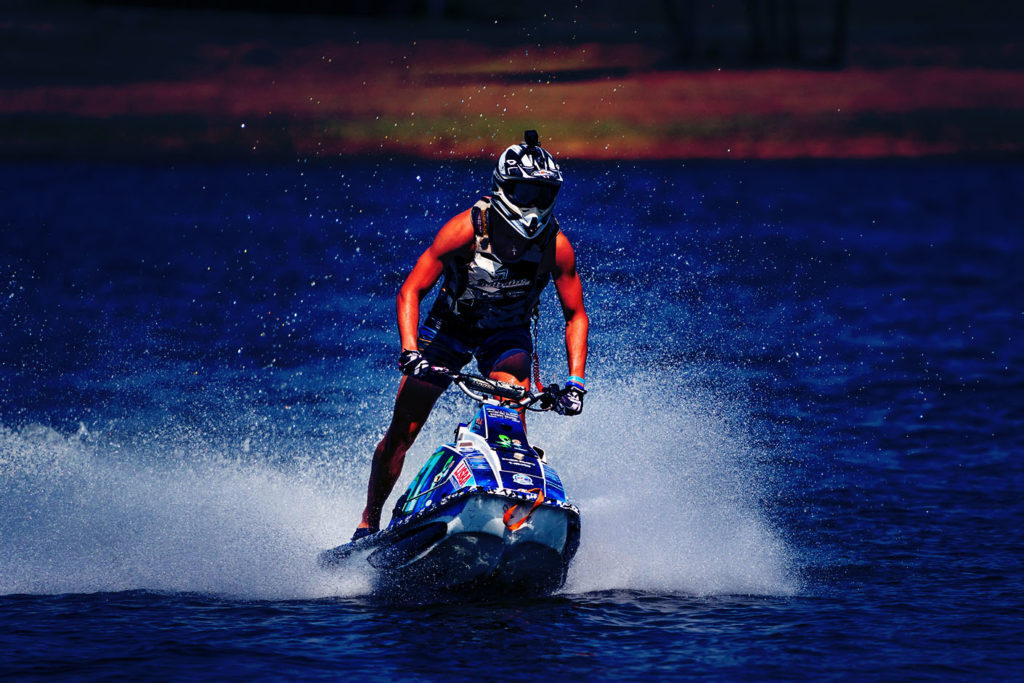Going too fast on a jet ski can lead to several potential consequences, both for the rider and for the jet ski itself.
Here are some of the main risks associated with excessive speed…
- Loss of Control – High speeds can make it more challenging to maintain control over the jet ski, especially in choppy or turbulent water conditions. Abrupt maneuvers or turns at high speeds can increase the risk of losing control and potentially capsizing the jet ski.
- Increased Risk of Collisions – Faster speeds reduce reaction time and increase the likelihood of colliding with other watercraft, obstacles such as buoys or rocks, or even swimmers. This poses significant safety risks to both the rider and others in the vicinity.
- Risk of Ejection – Riding at very high speeds increases the force exerted on the rider. This can lead to ejection from the jet ski in the event of hitting a wave or making a sudden turn, potentially resulting in injury from an impact with the water or the jet ski itself.
- Mechanical Strain – Operating a jet ski at maximum speeds for extended periods can put additional strain on the engine, drive system, and other mechanical components. This may lead to overheating, increased wear and tear, and potential mechanical failures or breakdowns.
- Legal and Safety Issues – Exceeding speed limits in designated areas can result in fines, citations, or other legal consequences. It’s important to adhere to posted speed limits and regulations to ensure safety and compliance with local laws.
To mitigate these risks, jet ski riders should…
- Know and Observe Speed Limits – Follow speed limits and regulations specific to the area where you are riding. These limits are typically set to ensure safety for all water users.
- Ride Responsibly – Adjust your speed based on water conditions, visibility, and proximity to other boats, swimmers, or obstacles. Maintain a safe speed that allows you to react quickly and control the jet ski effectively.
- Wear Proper Safety Gear – Always wear a properly fitting personal flotation device (PFD) or life jacket. This is crucial in the event of an unexpected ejection or accident.
- Practice Good Seamanship – Take a boating safety course to learn proper navigation, handling, and safety practices. Be aware of your surroundings and anticipate potential hazards while riding.
By riding responsibly and within safe speed limits, jet ski enthusiasts can enjoy the thrill of the sport while minimizing risks to themselves and others on the water.



